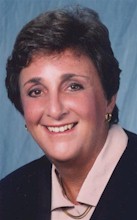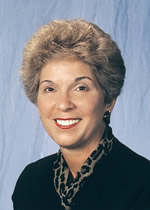|


|
|
Spas – How to Stay On-Trend
and Make Money
By Judith L. Singer, Ed.D., and Patty Monteson, M.S.,
Owners, Health Fitness Dynamics, Inc.
 |
Dr. Judy Singer |
 |
Patty Monteson |
One of the most popular marketing terms in the hospitality industry is the 3 letter word called “spa.” Other industries have since adopted this term as a marketing tool, e.g., auto spa, spa tea, spa shoes, spa pillows, spa music, spa candles, spa cuisine, spa lifestyle, etc. Spas have become an adjective as well as a noun. They are a commodity as well as an experience. This is good because it broadens the awareness of the term, but there is a danger in the hospitality industry with people jumping on the spa bandwagon to develop or operate a spa without always understanding what the consumer expects, what it costs to build and operate, what are the economic realities and risks, etc.
Spas are “hot” but it is easy to get “burned” unless your spa development, marketing and management plans are on-trend and market-driven. Spas are part of just about every new four and five star resort, condo-hotel and lifestyle real estate development. They are also being added to existing properties so that the property does not lose its market share or competitive positioning. Consumers are very spa savvy so it’s important to know how to make your spa different from and better than that of your competitors.
We always tell our clients that they do NOT want to be in the spa business per se. They should only build a spa if it contributes to their “core” business of selling rooms or real-estate. We are not believers in “build it and they will come” although if you do not have a spa, your property may not even be considered by meeting planners or leisure guests. Hospitality operators need to be committed to marketing and integrating the spa into their “core” business if they want it to be a profitable business as well as an asset to the overall lodging or real estate venture.
If you are planning to add a new spa or re-position your existing spa, consider some of the following trends that will help your spa be marketable and profitable:
1. Resort-Based “Hybrid” Spa: The hybrid spa is a resort-based spa that attracts a variety of markets in order to maximize its appeal, profitability and yield management potential. It combines the best features of the most popular and marketable types of spas. It is a resort-spa for the conference guest who may only have time for an ala carte treatment, yet it also appeals to the leisure guest who wants to enjoy an ala carte treatment, a half day spa package or a multi-day themed spa get-away. The local community can use it as a “day spa” that provides everything from an hour to a full day “spa vacation” experience with facilities that the local stand-alone day spa can not provide. The spa can be a membership-based “club spa” for the local community as well as for the lifestyle condo-hotel or residential resort home-owner This resort spa very different from the “spa resort” or destination spa where the experience is 100% spa-focused, e.g., guests at a destination spa are totally entrenched in a multi-day program of spa activities and spa cuisine with no temptations or “outsiders” that can distract from what is intended to be a healthful, life-changing, motivational spa vacation. The spa resort is the slowest growing segment of the spa industry whereas the resort spa is the fastest growing.
2. Spas are a Business: There will be increased focus on the realities of spa economics. Developers will need to understand and be willing to commit the financial resources for a turn-key spa which includes everything from the building to the training. Operators will need to understand the day-to-day costs and initiatives required for internal and external marketing as well as hospitality and technical service training and delivery. Spa directors will need to be business managers, motivators and marketers. Everyone needs to know how expensive it is to build and operate a spa, and they need to be realistic as to the ROI. They also need to be focused on how the spa helps to sell vacations, meetings and real-estate.
3. Lifestyle and Workstyle Real Estate: Spas will be part of up-scale residential and country club communities so that people can "live the spa life." Spas will also be an essential element in mixed-use retail, commercial and condo-hotel developments so that people can find more balance between work and relaxation and thereby increase their lifestyle balance, well-being, productivity and creativity. More and more people will want to live and work in communities with spa and lifestyle programs that enhance their quality of life with fitness/wellness activities and life enrichment programs.
4. Spas are Places of Celebration and Connection: Spa have gone beyond the pampering experience. They will focus on providing quality, purposeful leisure time with the goal being that when people leave the spa they look and feel better than when they arrived. People will go to a spa to enjoy some private time and space to connect with oneself as well as social time and space to connect with friends and family. Spa design will need to include a variety of spa suites to accommodate 2 or more people (this will be an important way to attract more men since they can go into the spa and actually spend time with their wife or girlfriend). Some suites will be a full “spa within a spa” with private lounge/eating area, treatment areas for a variety of spa services, bathroom with steam shower and sauna, outdoor patio, etc. Some will be “cluster suites” with a private lounge and 3 – 4 lock-off treatment rooms so that this whole area can be sold to a group or the rooms can be used on an ala carte treatment basis if there is not a spa group reserving the suite. Some suites will actually be hotel rooms with spa treatment areas as well as fitness equipment. Versatility and flexibility in design and programming will be critical in order to meet the needs and interests of the various markets who visit the spa for everything from privacy to partying and from a “time-out” to a “work-out.”
5. Spa Anywhere/Everywhere: The spa does not need to be confined to the four walls of the spa facility. You can add “spa-ish” pleasures in your guest rooms, dining room, lobby, meeting space, pool area, etc. with music, aromas, textures, special lighting, toiletries, etc. Your retail outlets and the on-line shopping section of your web-site can sell a variety of “home spa” products and accessories that extend your brand and your profits. Look for opportunities to create spa pleasures and benefits that do not require people actually having to go into the spa. When done well, these spa touches can be marketing tools as well as generate additional revenues.
6. Spa Playgrounds: Spas will pay more attention to creating better facility areas that actually become experiential, self-service treatment areas rather than amenity areas. Spa playgrounds can include aromatherapy steam rooms, environmental saunas, air jet color therapy tubs, specialty hydro-massage showers, reflexology water walks, relaxation meditation pods, product bars, aqua massage tables, foot massagers, spa “toy boxes” with a variety of mind-challenging and entertaining puzzles and games, etc. This will appeal to the "spa virgin" who has never been touched and wants to move at their own pace in a safe environment. It will also appeal to the "spa veteran" who wants something more than the under-whelming facility area which typically consists of a steam room, sauna and whirlpool. The playground can also include a retail area or a mini version of a Brookstone or Sharper Image with "feel good try and buy" areas for the home spa experience.
7. Spas Need to Offer Service and Not Just Services: Spas will need to focus more on hospitality. Spa staff can not be "order takers"...they need to be "experience makers" and "memory makers." This will happen with customized, personalized service where there are signature WOW moments and features in every area of the spa. Successful spas will be those that "over-deliver rather than over-whelm." Spas do not need to offer the “encyclopedia of world-wide spa treatments” since this can create stressful decisions for the guests, inadequate training for the staff and too much money tied up in product inventory. It is better to do a few things very well and create your signature touches rather than think that “more is better.”
8. Spas Will Go Mainstream: Spa facilities, treatments and pricing will start to focus on the “masses” and not just the “wealthy.” The luxury market expects the spa to be part of their conference or vacation experience, but there are lots of other people who would also enjoy and benefit from the spa experience. A client once told us “the rich will make you poor and the poor will make you rich.” There will be an opportunity to create spas that are more main-stream. They will need to offer simpler, more affordable services so that more people can go from being “spa virgins” to “spa veterans.” The message needs to include how the spa experience helps you rather than just pampers you. Mass customization will be important. You will need to creatively orchestrate how you can personalize rather than homogenize the spa experience so that guests achieve their goals based on their interests, time and budget.
Spas are here to stay. They are not a passing fad. If you want your spa to be an asset and not an albatross, you need to understand what the market wants then deliver it. When properly planned, marketed and managed, the spa should be a viable business in and of itself as well as an integral component of your core business.
Judith L. Singer, ISHC, and Patricia A. Monteson, ISHC, are the Founders & Co-Owners of Pompano Beach, Florida-based Health Fitness Dynamics, Inc. (HFD) (www.hfdspa.com). HFD is an internationally recognized spa consulting company that specializes in the planning, marketing and management support services of spas for fine hotels and resorts, day spas and mixed-use developments. HFD is also actively involved in conducting economic and consumer spa research. Since its inception in 1983, HFD has been the spa consulting firm to over $650 million of completed spa projects. A partial list of clients includes: Little Dix Bay, Four Seasons Hulalai, Miraval, Malliouhana, Cranwell, Pinehurst, The Homestead, The Greenbrier, Bacara, Silverado, Delano, La Posada de Santa Fe and Hotel Crescent Court. Contact Information: 954-942-0049 or judysinger@hfdspa.com or pattymonteson@hfdspa.com.
|
[ Home || What's HFD? || Scope of Services || Clients || News/Research ]
Health
Fitness Dynamics, Inc.
1305 N.E. 23rd Avenue, Suite 2, Pompano Beach, Florida,
U.S.A. 33062
Phone:
954-942-0049 - Fax: 954-941-0854
E-MAIL: hfd@hfdspa.com
|